by Dan Weisz
Elegant Trogons are another one of those birds who count southern Arizona as their only home in the United States. Upon seeing one in the wild, your first, immediate thoughts are “Wow, this is a tropical bird”. A Trogon’s rose-red belly and metallic green back are vivid. Trogons are found during the summers in the canyon forests of southern Arizona’s Sky Islands among oak and sycamore trees. They have not been found in the Catalinas yet, but perhaps one day. So they are not really “Foothills” birds, but are pretty amazing birds anyway and are relative neighbors. Perhaps if you look across the Tucson valley towards the Santa Ritas, you can imagine them in the distant canyons.
Check out this range map to see where Elegant Trogons can be found in the United States:
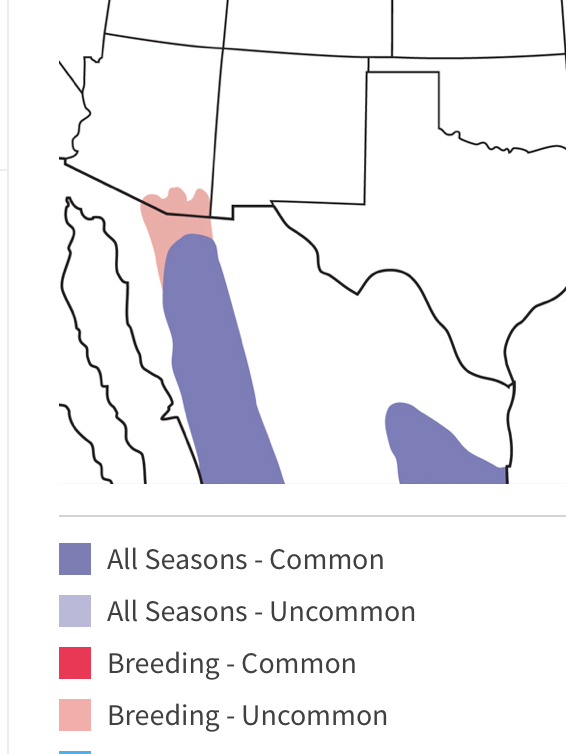
A week ago, a friend told me about a nest she had been following in Madera Canyon and invited me along for a look. We waited for over a very long hour-and-a-half by the tree with the nest cavity. A female appeared suddenly and fed the chicks in the nest but flew off as soon as she was finished. We waited another half hour or so until the male Trogon finally showed up. The male’s behavior was very different. He sat on a perch holding a very fat caterpillar and waited and waited while facing the nest cavity. The male bird below could be molting, as the feathers on its belly appear a bit scruffy.
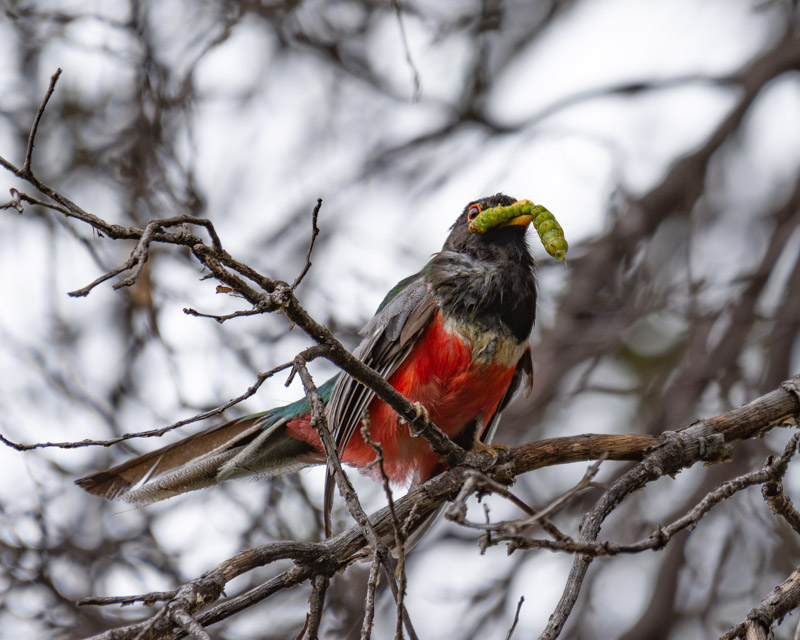
Meanwhile, the two chicks in the nest were eager to be fed. The chicks seemed to be old enough to fledge and leave the nest very soon. Trogons are cavity nesters, but they are unable to ‘dig’ their own cavities. They are largely dependent on woodpeckers to first create the holes which they then use in following years.
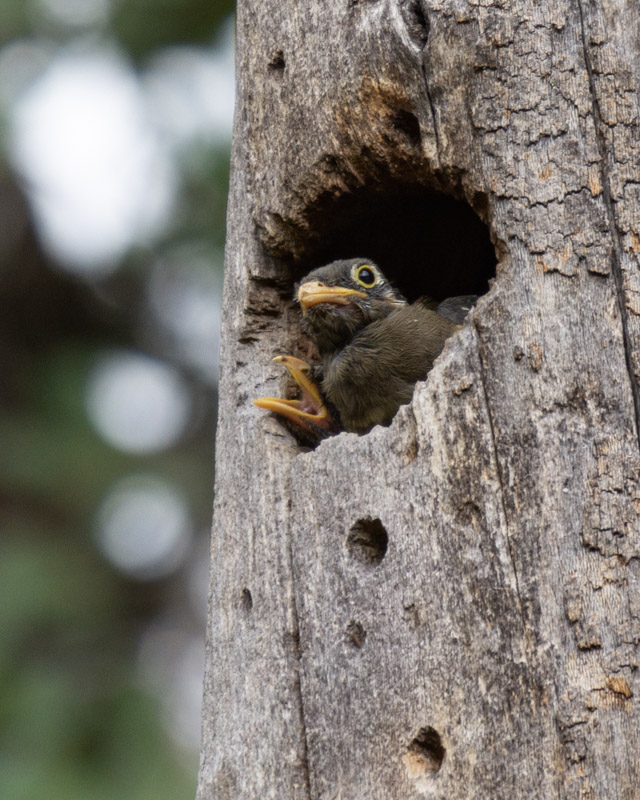
One baby seems to be much more hungry and assertive than its sibling.
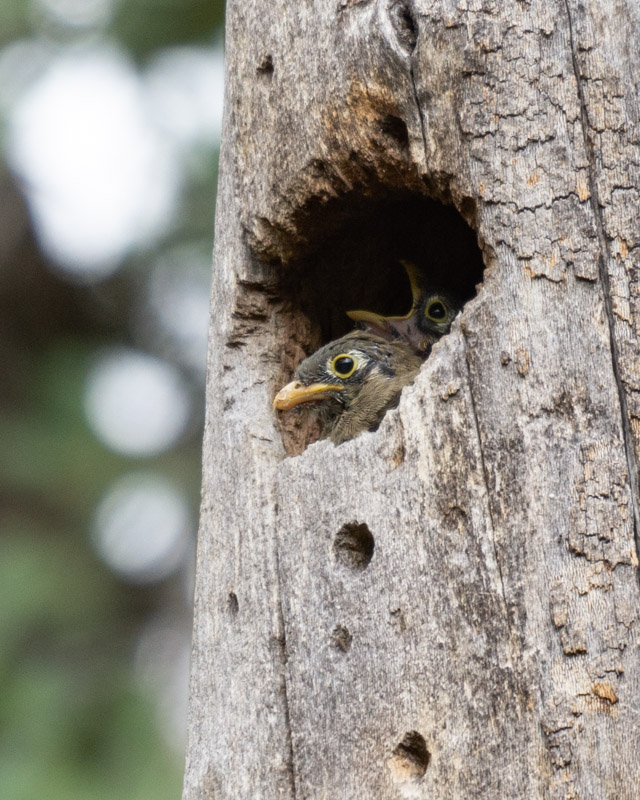
Finally, the father Trogon approached the nest after waiting for five minutes or more. In the photo below, his wings are blurred due to the camera’s slow shutter speed, but seeing the bird’s posture and the young Trogon’s reactions makes this shot. So who gets the juicy snack? The belly colors of the Elegant Trogon stand out here as does the red eye-ring against the dark green/black face.
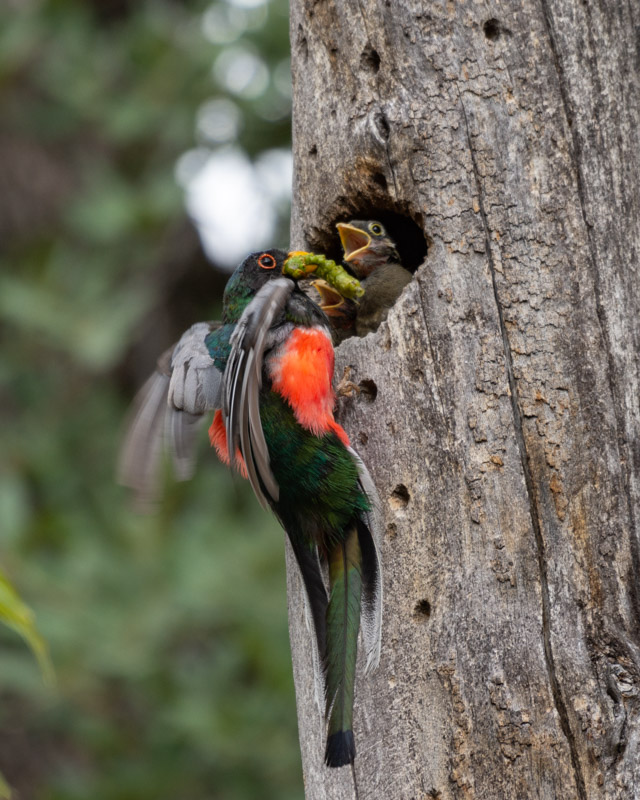
Apparently, the bird on the right was left empty handed, or empty beaked. The adult Trogon’s metallic green back and square-tipped tail are evident as is the bird’s gray, finely barred side feathers.
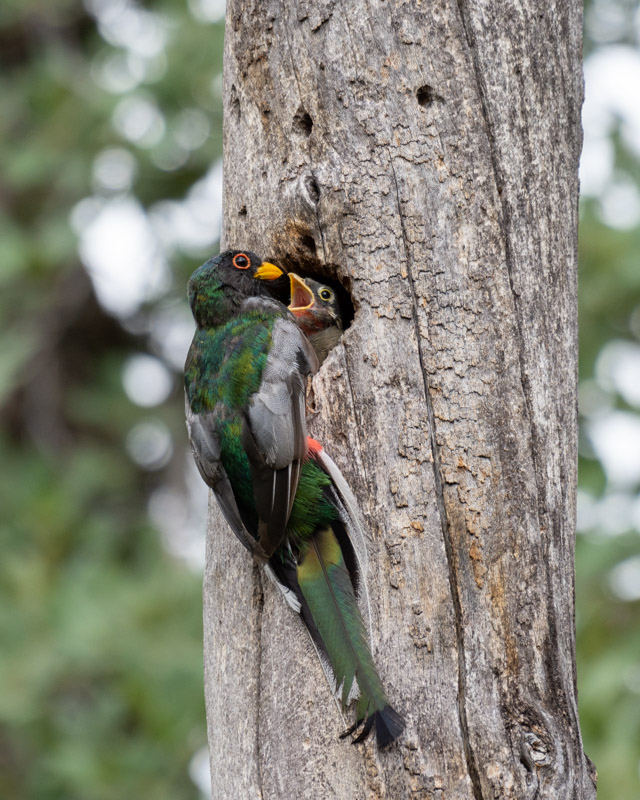
Papa Trogon left to continue hunting while one baby was chowing down and the second bird looked perplexed.
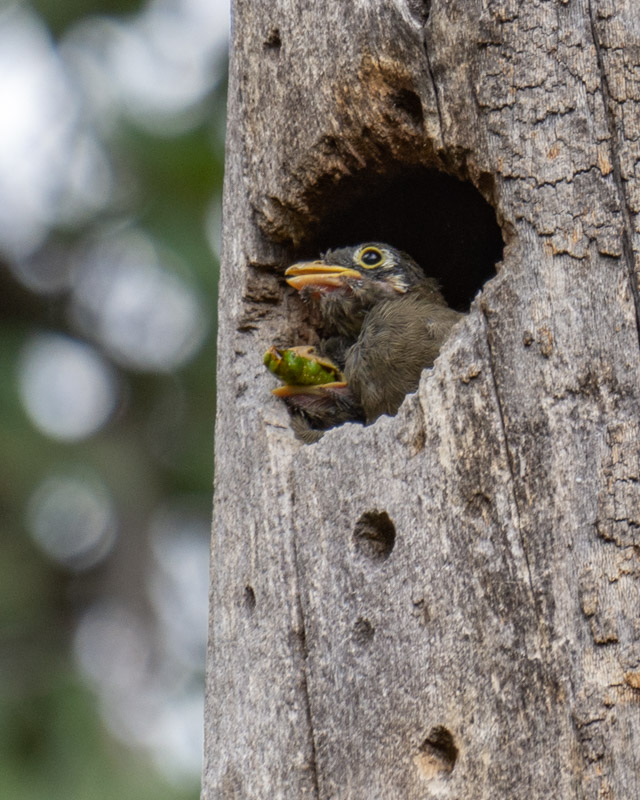
Within minutes, the adult Elegant Trogon reappeared with a cicada in its yellow beak. Note the bird’s white chest band.
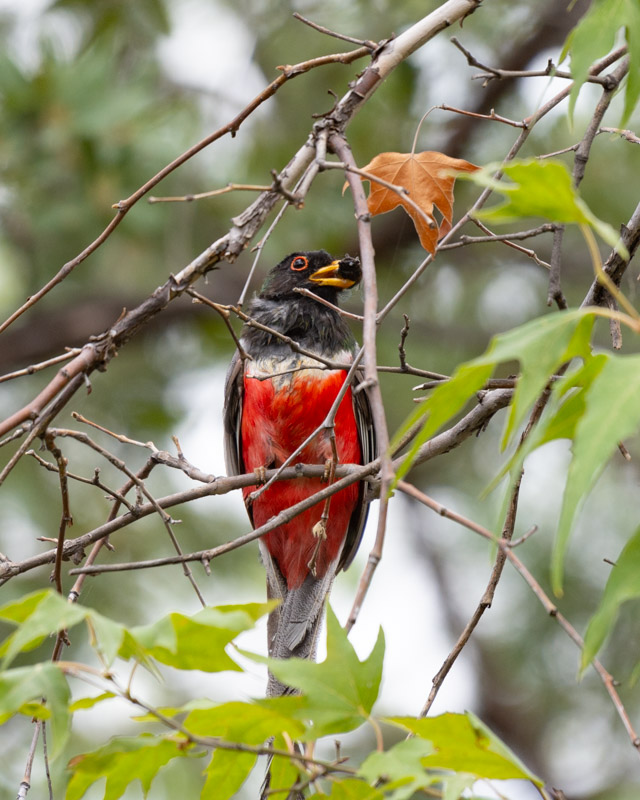
The cicada is carefully but firmly held in the Trogon’s beak.
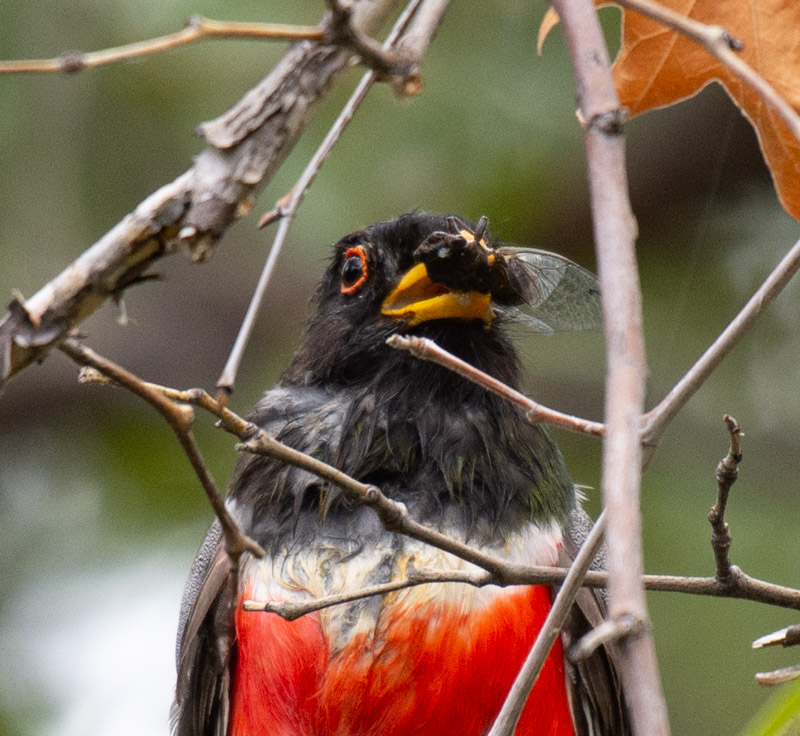
And then papa delivers to the second hungry bird in the nest. This is another, closer look at the feathers on his back.
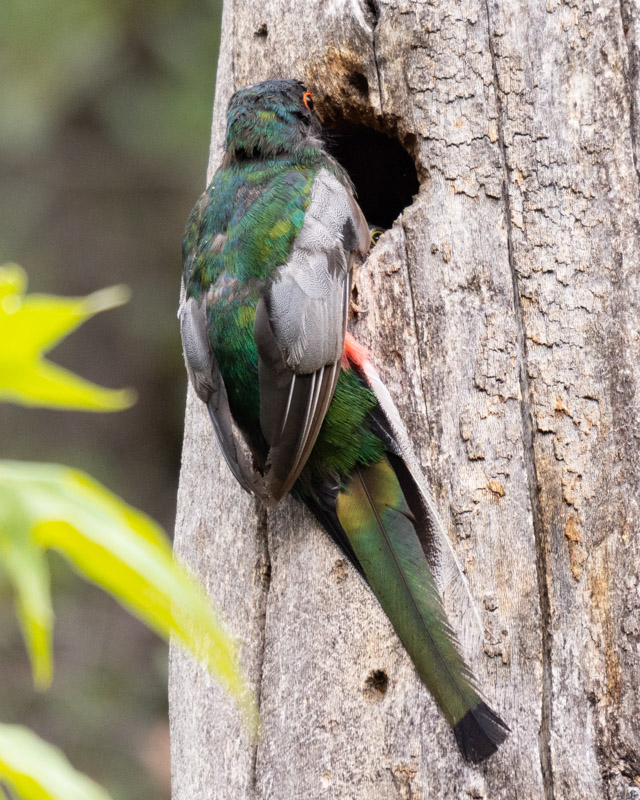
The female Elegant Trogon is colored very differently from the male. This photo was taken when we first saw her before the male arrived. I was shooting into the bright sky and the angle isn’t the best, but you can see that the female does not have the bright green back that the male does. She has more of a gray head, chest and back and a belly lightly washed in red. She also has a white teardrop behind her eye. The female Elegant Trogon does have a square-tipped tail like her mate’s and but it is more coppery colored.
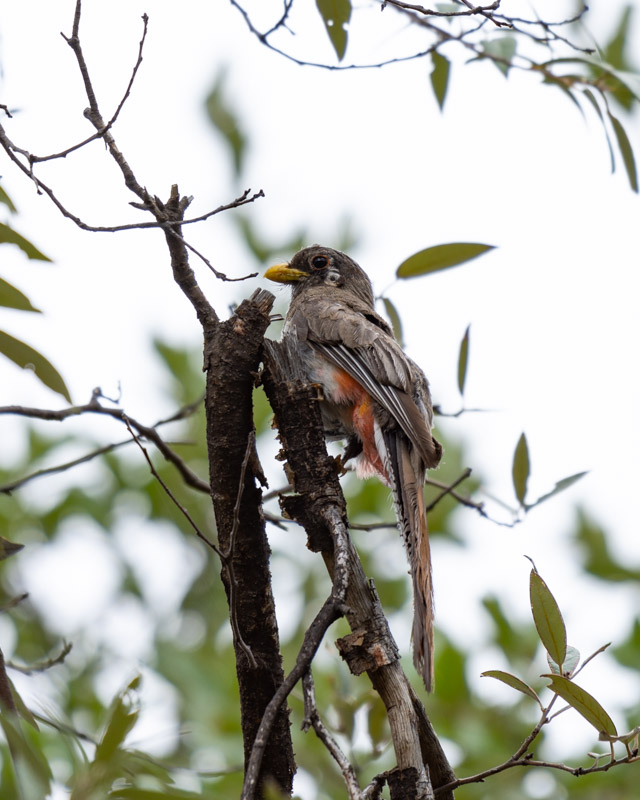
I feel very fortunate to have witnessed these birds that day. I learned that the babies were no longer in the nest just two days later and I believe that they had fledged and were being fed and taken care of out of the nest somewhere in the Canyon. I know I will look for them again next spring.
Here is a nice, short story on Elegant Trogons by the podcast Birdnote. You can hear the Trogon’s unique ‘barking’ sound here:
https://www.birdnote.org/show/elegant-trogon
Return to Foothills Clusters Home
